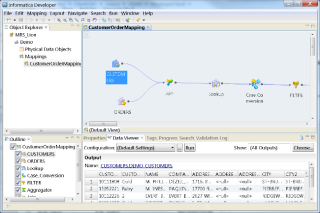How to Install Alfresco Community Edition on Ubuntu 16.04
Using a Different System? Alfresco Community Edition is an open source version of the Alfresco Content Services. It is written in Java and uses PostgreSQL t
Apache OpenMeetings is an open source web conferencing application. It is written in Java and supports multiple database servers. It provides many features, such as audio and video conferencing, screen sharing, file explorer, a user moderation system, private messages and contacts, an integrated calendar for meeting plans and many more. You can also record conferencing sessions. It provides a SOAP/REST API and multiple plugins to easily integrate with Moodle, Jira, Joomla, Confluence and more.
For this tutorial, we will use 192.168.1.1 as the public IP address and meetings.example.com as the domain name pointed towards the Vultr instance. Please make sure to replace all occurrences of the example IP address and domain name with the actual one.
Update your base system using the guide How to Update Ubuntu 16.04. Once your system has been updated, proceed to install Java.
OpenMeetings is written in Java, thus it requires Java Runtime Environment (JRE) to work. Add the Ubuntu repository for Oracle Java 8.
sudo add-apt-repository --yes ppa:webupd8team/java
sudo apt update
Install Java.
sudo apt -y install oracle-java8-installer
Verify Java's version.
java -version
You will see the following output.
user@vultr:~$ java -version
java version "1.8.0_161"
Java(TM) SE Runtime Environment (build 1.8.0_161-b12)
Java HotSpot(TM) 64-Bit Server VM (build 25.161-b12, mixed mode)
Set the default path for Java by installing the following package.
sudo apt -y install oracle-java8-set-default
You can verify that JAVA_HOME is set by running the following.
echo $JAVA_HOME
You will see a similar output.
user@vultr:~$ echo $JAVA_HOME
/usr/lib/jvm/java-8-oracle
If you see no output at all, you will need to log out from the current shell and log back in.
Install the ImageMagick and GhostScript libraries.
sudo apt -y install imagemagick ghostscript libxt6 libxrender1
ImageMagick provides support to upload images and import them to the whiteboard. GhostScript enables you to upload PDFs to the whiteboard.
Verify the version of ImageMagick and GhostScript to ensure that they have installed successfully.
user@vultr:~$ identify -version
Version: ImageMagick 6.8.9-9 Q16 x86_64 2017-07-31 http://www.imagemagick.org
Copyright: Copyright (C) 1999-2014 ImageMagick Studio LLC
Features: DPC Modules OpenMP
Delegates: bzlib cairo djvu fftw fontconfig freetype jbig jng jpeg lcms lqr ltdl lzma openexr pangocairo png rsvg tiff wmf x xml zlib
user@vultr:~$ ghostscript -v
GPL Ghostscript 9.18 (2015-10-05)
Copyright (C) 2015 Artifex Software, Inc. All rights reserved.
Furthur, we will also need to install either Apache OpenOffice or LibreOffice on the system. Installing either of these will enable OpenMeetings to import the files in Office document formats such as .doc, .docx, .ppt, .pptx, or .xlx. In this tutorial, we will install Apache OpenOffice.
Switch to the temporary directory and download the Apache OpenOffice package for Ubuntu.
cd /tmp
wget https://downloads.sourceforge.net/project/openofficeorg.mirror/4.1.5/binaries/en-US/Apache_OpenOffice_4.1.5_Linux_x86-64_install-deb_en-US.tar.gz
Extract the archive and install all the DEB packages.
tar xf Apache_OpenOffice_4.1.5_Linux_x86-64_install-deb_en-US.tar.gz
cd en-US/DEBS
sudo dpkg -i *.deb
sudo dpkg -i desktop-integration/openoffice4.1-debian-menus_4.1.5*.deb
Install the PPA for the latest version of FFmpeg.
sudo add-apt-repository --yes ppa:jonathonf/ffmpeg-3
sudo apt update
Install FFmpeg and SoX.
sudo apt -y install ffmpeg sox
FFmpeg and SoX will enable you to record meetings. They will also help in importing media files such as .avi, .flv, .mov and .mp4 into the whiteboard. Verify the installation by checking the versions of both FFmpeg and SoX.
user@vultr:~$ sox --version
sox: SoX v14.4.1
user@vultr:~$ ffmpeg -version
ffmpeg version 3.4.2-1~16.04.york0.2 Copyright (c) 2000-2018 the FFmpeg developers
built with gcc 5.4.0 (Ubuntu 5.4.0-6ubuntu1~16.04.9) 20160609
OpenMeetings supports multiple types of database servers, such as MySQL, PostgreSQL, Apache Derby, and Oracle. In this tutorial, we will use PostgreSQL to host the OpenMeeting database.
PostgreSQL is an object-relational database system, known for its stability and speed. The default Ubuntu repository contains an old version of PostgreSQL, so add the PostgreSQL repository.
echo "deb http://apt.postgresql.org/pub/repos/apt/ xenial-pgdg main" | sudo tee /etc/apt/sources.list.d/pgdg.list
wget --quiet -O - https://www.postgresql.org/media/keys/ACCC4CF8.asc | sudo apt-key add -
sudo apt update
Install the PostgreSQL database server.
sudo apt -y install postgresql
Start the PostgreSQL server and enable it to start automatically at boot time.
sudo systemctl start postgresql
sudo systemctl enable postgresql
Change the password for the default PostgreSQL user.
sudo passwd postgres
Log in as the PostgreSQL user.
sudo su - postgres
Create a new PostgreSQL user for the OpenMeetings user.
createuser openmeetings
You can use any username instead of openmeetings.
Switch to the PostgreSQL shell.
psql
Set a password for the newly created user for the OpenMeetings database.
ALTER USER openmeetings WITH ENCRYPTED password 'DBPassword';
Replace DBPassword with a secure password.
Create a new database for the OpenMeetings installation.
CREATE DATABASE openmeetings OWNER openmeetings;
Exit from the psql shell.
\q
Switch to the sudo user.
exit
Save the file and exit the editor.
Since all the required dependencies are installed, create a new user for OpenMeetings. Using a non-root user for running OpenMeetings is recommended for the security of the server.
sudo adduser --home /var/openmeetings --disabled-login --disabled-password --gecos "OpenMeetings User" openmeetings
The command above will also create the home directory of the openmeetings user in /var/openmeetings.
Check the Apache OpenMeetings download page to obtain the link to the latest available release. Download the OpenMeetings archive.
cd /tmp
wget http://www-eu.apache.org/dist/openmeetings/4.0.2/bin/apache-openmeetings-4.0.2.tar.gz
Extract the archive into the /var/openmeetings directory.
sudo tar xf apache-openmeetings-*.tar.gz -C /var/openmeetings
Provide ownership of the files to the OpenMeetings user we have created earlier.
sudo chown -R openmeetings:openmeetings /var/openmeetings
You can now start the application.
sudo su -s /bin/bash -c 'cd /var/openmeetings/ && sh red5.sh' openmeetings
You can now access http://192.168.1.1:5080/openmeetings in your favorite browser. You will see the welcome screen with instructions to install GhostScript.

Since we have already installed GhostScript, proceed further. On the next interface, you will be prompted to provide database server details. Select database type "PostgreSql" and provide your database server details that you configured during the PostgreSQL installation.

Click on the "Check" button and you will get the message: "Database check was successful". Provide your administrator account details and a group name in the next interface.

Configure the basic settings of your installation; such as to allow self-registration, email verification, and default language. Also, provide your SMTP server details. If you do not have an SMTP server ready, you can also provide the SMTP details later in the administrator dashboard.

You will be asked for the path to the binaries of different applications. Provide /usr/bin as the path for ImageMagick, FFmpeg, and SoX. If the application is providing errors for the path entered, then you can use which <binary_name> to find the absolute path to the binary. For example, which ffmpeg should give you /usr/bin/ffmpeg as output. Use /opt/openoffice4 as the path to the OpenOffice binaries.

You can skip the configuration on the next interface since we are going to use the default values. Finally, click the "Finish" button to install the application and write the database.
OpenMeetings is now installed on your server. To make it more production friendly, we will setup Systemd to manage the OpenMeetings server. We will also configure Nginx with a Let's Encrypt SSL as the secured reverse proxy to serve the application.
It is recommended to set up a Systemd service unit to manage the application. This will ensure that the service is automatically started on boot time and failures.
Stop the OpenMeetings server either by pressing CTRL + C or by killing the shell of the openmeetings user.
sudo pkill -KILL -u openmeetings
Create a new Systemd unit file for OpenMeetings.
sudo nano /etc/systemd/system/openmeetings.service
Populate the file.
[Unit]
Description=OpenMeeting Service
After=network.target
[Service]
Type=simple
User=openmeetings
WorkingDirectory=/var/openmeetings
ExecStart=/var/openmeetings/red5.sh
Restart=always
[Install]
WantedBy=multi-user.target
Start the OpenMeetings server and enable it to automatically start at boot time.
sudo systemctl start openmeetings
sudo systemctl enable openmeetings
To check the status of the service, you can run the following.
sudo systemctl status openmeetings
You will see a similar output.
user@vultr:~$ sudo systemctl status openmeetings
● openmeetings.service - OpenMeeting Service
Loaded: loaded (/etc/systemd/system/openmeetings.service; enabled; vendor preset: enabled)
Active: active (running) since Sun 2018-04-08 19:08:33 UTC; 52s ago
Main PID: 8788 (java)
CGroup: /system.slice/openmeetings.service
└─8788 /usr/bin/java -Dred5.root=/var/openmeetings -Djava.security.debug=failure -Xms256m
Apr 08 19:08:40 vultr red5.sh[8788]: [INFO] [main] org.apache.catalina.core.StandardService - Starti
Apr 08 19:08:40 vultr red5.sh[8788]: Apr 08, 2018 7:08:40 PM org.apache.catalina.core.StandardEngine
...
By default, OpenMeetings listens to port 5080. If the connection between the browser and server are not encrypted with SSL, then logins and other information will be sent using plain text. This might be a potential threat as someone eavesdropping on the network might obtain the information. To mitigate this issue, we will setup Nginx as the reverse proxy which will listen to the default HTTPS port and will proxy all the requests to the OpenMeetings server.
Install Nginx.
sudo apt -y install nginx
Start Nginx and enable it to automatically start at boot time.
sudo systemctl start nginx
sudo systemctl enable nginx
Add the Certbot repository.
sudo add-apt-repository --yes ppa:certbot/certbot
sudo apt-get update
Install Certbot, which is the client application for Let's Encrypt CA.
sudo apt -y install certbot
Note: To obtain certificates from Let's Encrypt CA, the domain for which the certificates are to be generated must be pointed towards the server. If not, make the necessary changes to the DNS records of the domain and wait for the DNS to propagate before making the certificate request again. Certbot checks the domain authority before providing the certificates.
Generate the SSL certificates.
sudo certbot certonly --webroot -w /var/www/html -d meetings.example.com
The generated certificates are likely to be stored in /etc/letsencrypt/live/meetings.example.com/. The SSL certificate will be stored as fullchain.pem and private key will be stored as privkey.pem.
Let's Encrypt certificates expire in 90 days, hence it is recommended to set up auto-renewal of the certificates using Cron jobs.
Open the cron job file.
sudo crontab -e
Add the following line at the end of the file.
30 5 * * * /usr/bin/certbot renew --quiet
The above cron job will run every day at 5:30 AM. If the certificate is due for expiration, it will automatically be renewed.
Create a new configuration file for OpenMeetings.
sudo nano /etc/nginx/sites-available/openmeetings
Populate the file.
server {
listen 80;
server_name meetings.example.com;
return 301 https://$host$request_uri;
}
server {
listen 443;
server_name meetings.example.com;
ssl_certificate /etc/letsencrypt/live/meetings.example.com/fullchain.pem;
ssl_certificate_key /etc/letsencrypt/live/meetings.example.com/privkey.pem;
ssl on;
ssl_session_cache builtin:1000 shared:SSL:10m;
ssl_protocols TLSv1 TLSv1.1 TLSv1.2;
ssl_ciphers HIGH:!aNULL:!eNULL:!EXPORT:!CAMELLIA:!DES:!MD5:!PSK:!RC4;
ssl_prefer_server_ciphers on;
access_log /var/log/nginx/openmeetings.access.log;
location / {
proxy_pass http://localhost:5080;
proxy_set_header host $host;
proxy_http_version 1.1;
proxy_set_header upgrade $http_upgrade;
proxy_set_header connection "upgrade";
}
}
Active the configuration.
sudo ln -s /etc/nginx/sites-available/openmeetings /etc/nginx/sites-enabled/openmeetings
Check for errors in the new configuration file.
sudo nginx -t
If you see the following output, the configuration is error free.
user@vultr:~$ sudo nginx -t
nginx: the configuration file /etc/nginx/nginx.conf syntax is ok
nginx: configuration file /etc/nginx/nginx.conf test is successful
If you have received some kind of error, make sure to double check the path to the SSL certificates. Restart the Nginx web server to implement the change in configuration.
sudo systemctl restart nginx
Before you can start using the application on the SSL secured site, you will need to make a configuration change in OpenMeetings. Login to your OpenMeetings administrative dashboard and navigate to "Administration >> Configuration". In the table with columns ID, key and value, find application.base.url. Change its value to https://meetings.example.com according to your domain name. Save the configuration by clicking the save icon above.

Restart the OpenMeetings service.
sudo systemctl restart openmeetings
Now, you can browse to https://meetings.example.com using your favorite web browser and log in to use the application.
Congratulations, Apache OpenMeetings is now installed on your server. You can invite your friends and start using OpenMeetings for online conferences.
Using a Different System? Alfresco Community Edition is an open source version of the Alfresco Content Services. It is written in Java and uses PostgreSQL t
¿Usando un sistema diferente? osTicket es un sistema de tickets de soporte al cliente de código abierto. El código fuente de osTicket está alojado públicamente en Github. En este tutorial
¿Usando un sistema diferente? osTicket es un sistema de tickets de soporte al cliente de código abierto. El código fuente de osTicket está alojado públicamente en Github. En este tutorial
Using a Different System? Matomo (formerly Piwik) is an open source analytics platform, an open alternative to Google Analytics. Matomo source is hosted o
Using a Different System? Osclass is an open source project that allows you to easily create a classified site without any technical knowledge. Its sourc
Using a Different System? Matomo (formerly Piwik) is an open source analytics platform, an open alternative to Google Analytics. Matomo source is hosted o
¿Usando un sistema diferente? X-Cart es una plataforma de comercio electrónico de código abierto extremadamente flexible con toneladas de características e integraciones. El código fuente de X-Cart es hoste
Using a Different System? Microweber is an open source drag and drop CMS and online shop. Microweber source code is hosted on GitHub. This guide will show yo
Using a Different System? Mailtrain is an open-source self hosted newsletter app built on Node.js and MySQL/MariaDB. Mailtrains source is on GitHub. Thi
Using a Different System? Matomo (formerly Piwik) is an open source analytics platform, an open alternative to Google Analytics. Matomo source is hosted o
Using a Different System? Mailtrain is an open-source self hosted newsletter app built on Node.js and MySQL/MariaDB. Mailtrains source is on GitHub. Thi
Using a Different System? Mailtrain is an open-source self hosted newsletter app built on Node.js and MySQL/MariaDB. Mailtrains source is on GitHub. Thi
¿Usando un sistema diferente? Taiga es una aplicación gratuita y de código abierto para la gestión de proyectos. A diferencia de otras herramientas de gestión de proyectos, Taiga utiliza un incre
Using a Different System? osTicket is an open-source customer support ticketing system. osTicket source code is publicly hosted on Github. In this tutorial
¿Usando un sistema diferente? Alfresco Community Edition es una versión de código abierto de Alfresco Content Services. Está escrito en Java y usa PostgreSQL t
Using a Different System? Introduction Akaunting is a free, open source and online accounting software designed for small businesses and freelancers. It i
¿Usando un sistema diferente? Zammad es un sistema de asistencia / tickets de código abierto diseñado para equipos de atención al cliente. Con Zammad, servicio al cliente
Using a Different System? Akaunting is a free, open source and online accounting software designed for small businesses and freelancers. It is built wit
Using a Different System? InvoicePlane is a free and open source invoicing application. Its source code can be found on this Github repository. This guid
Using a Different System? Matomo (formerly Piwik) is an open source analytics platform, an open alternative to Google Analytics. Matomo source is hosted o
ZPanel, un panel de control de alojamiento web popular, se bifurcó en 2014 a un nuevo proyecto llamado Sentora. Aprende a instalar Sentora en tu servidor con este tutorial.
Aprende cómo instalar Vtiger CRM, una aplicación de gestión de relaciones con el cliente, en CentOS 7 para aumentar tus ventas y mejorar el servicio al cliente.
Esta guía completa le mostrará cómo configurar un servidor Counter-Strike 1.6 en Linux, optimizando el rendimiento y la seguridad para el mejor juego. Aprende los pasos más recientes aquí.
Los ataques de ransomware van en aumento, pero ¿puede la IA ayudar a lidiar con el último virus informático? ¿Es la IA la respuesta? Lea aquí, sepa que la IA es una bendición o una perdición
ReactOS, un sistema operativo de código abierto y gratuito, está aquí con la última versión. ¿Puede satisfacer las necesidades de los usuarios de Windows de hoy en día y acabar con Microsoft? Averigüemos más sobre este estilo antiguo, pero una experiencia de sistema operativo más nueva.
Whatsapp finalmente lanzó la aplicación de escritorio para usuarios de Mac y Windows. Ahora puede acceder a Whatsapp desde Windows o Mac fácilmente. Disponible para Windows 8+ y Mac OS 10.9+
Lea esto para saber cómo la Inteligencia Artificial se está volviendo popular entre las empresas de pequeña escala y cómo está aumentando las probabilidades de hacerlas crecer y dar ventaja a sus competidores.
Recientemente, Apple lanzó macOS Catalina 10.15.4, una actualización complementaria para solucionar problemas, pero parece que la actualización está causando más problemas que conducen al bloqueo de las máquinas Mac. Lee este artículo para obtener más información
13 Herramientas comerciales de extracción de datos de Big Data
Nuestra computadora almacena todos los datos de una manera organizada conocida como sistema de archivos de diario. Es un método eficiente que permite a la computadora buscar y mostrar archivos tan pronto como presiona buscar.




